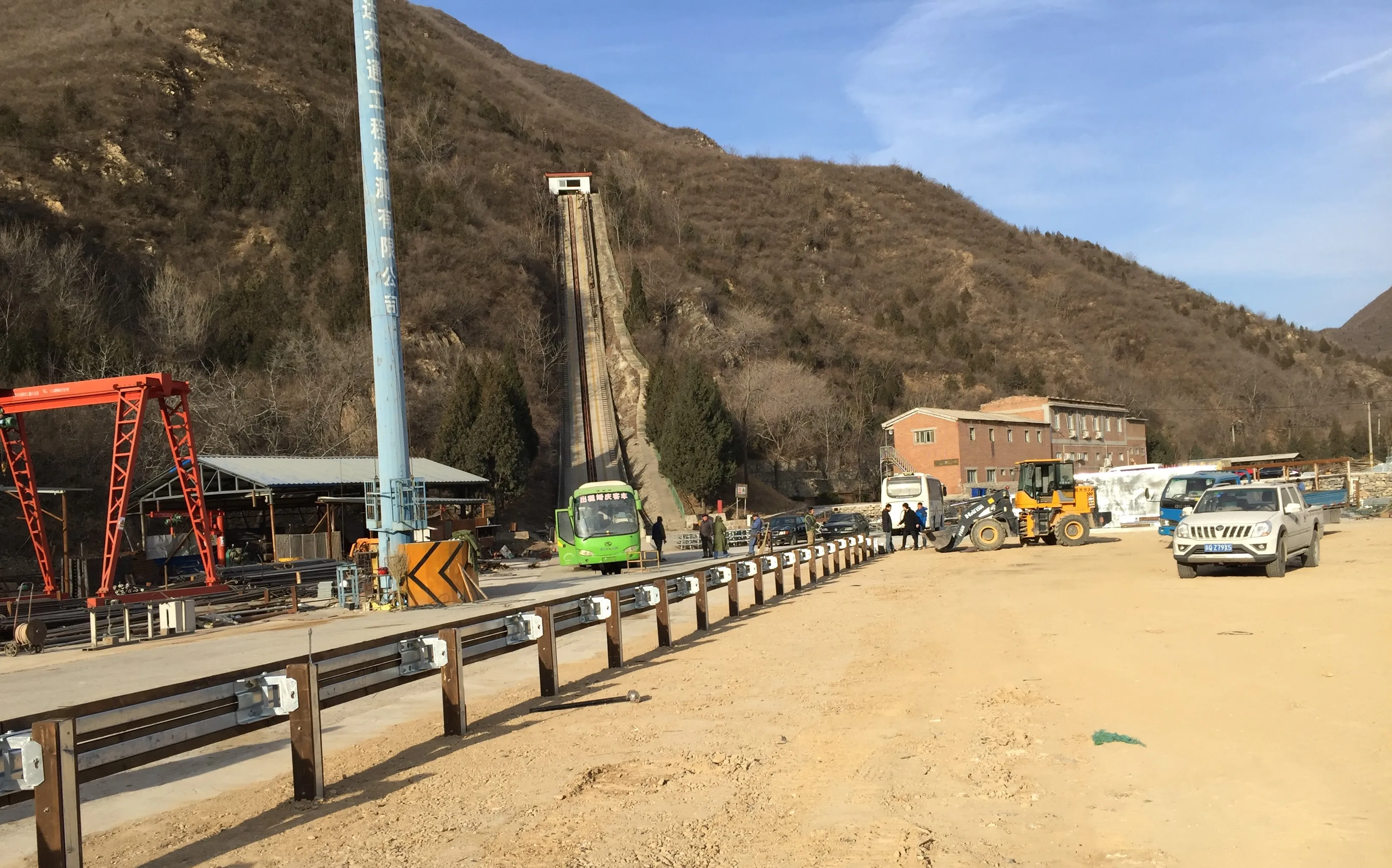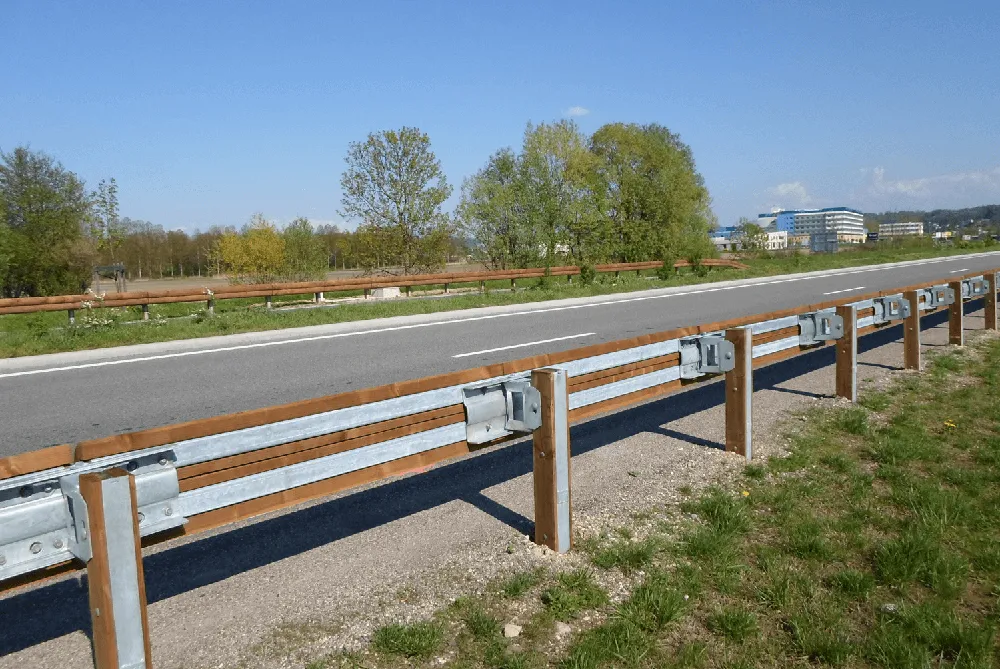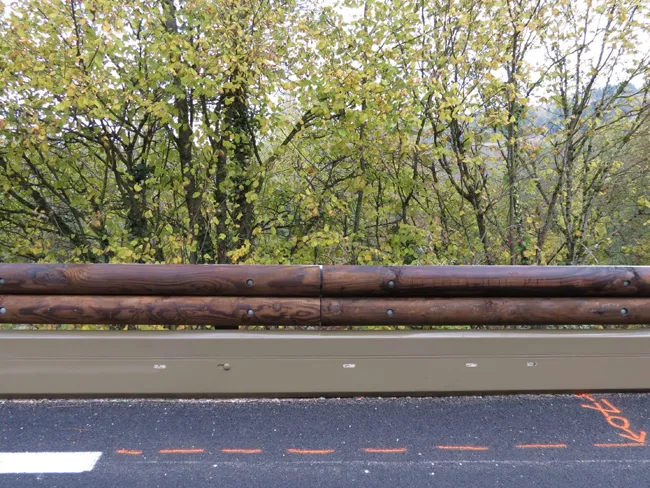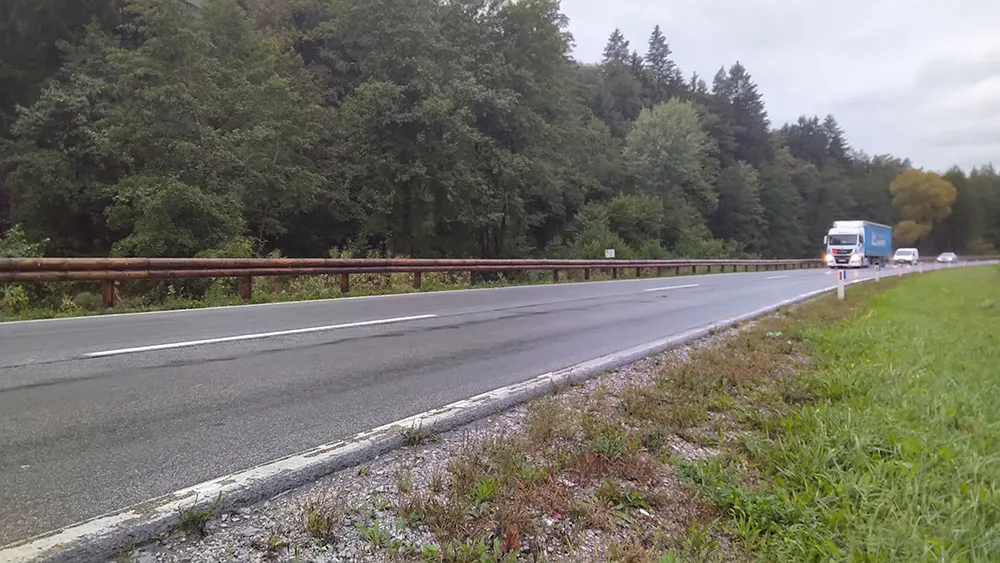
The T40 barrier recently passed a crash-test programme at the Beijing Shenhuada laboratory. This certification is an essential step for the development of the company’s business in China, according to the French manufacturer, which will be at
The barrier system consists of two half-logs 22cm in diameter and either 2m or 4m long, reinforced at the back with a steel U-channel. The rails are mounted on an IPE 140 support with metal spacer. According to EN 1317 standard, the guardrail T40 offers a L2 double containment level N2 for passenger cars and H2 for heavy vehicles. To comply with Chinese regulations, the guardrail was tested with three vehicle types: a 10tonne bus launched at 60kph, a 10tonne truck, also launched at 60kph, and a 1.5tonne car at 100kph.
A first T40 crash barrier job was installed last December in Shandong province on the access road to Mount Tai Shan – a
Tertu said that the T40 system was tested in 2002 in France and has been successfully installed in other countries including Italy, Norway, Ireland, Czech Republic, the British Channel Island of Jersey, the Netherlands, Luxembourg, Belgium, Andorra, Israel, and of course France.
The current CE certified range offers 12 models, from containment level N1 to H2 covering working widths from W3 to W7.
The company has also partners or licensing arrangements in Chile, Brazil, New Zealand, Australia and South Korea. Half of the company’s turnover last year came from overseas contracts.









